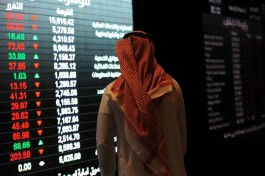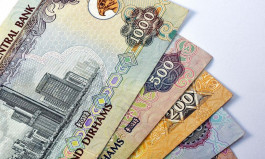Gold prices continued their upward trend early Tuesday morning following a strong rally on Monday. At 5:46 AM, spot gold was trading at $4,141.20 per ounce, while futures contracts were at $4,147.35 per ounce.
US dollar futures are settling at 99.552.
The weakness of the dollar is considered one reason for the rise in gold prices. However, the end of the government shutdown also appears to be driving the price increase. On Monday evening, the US Senate passed a bill that would release additional funding and end the longest government shutdown in history. The bill will now be sent to the House of Representatives for consideration.
The Senate voted 60-40 to approve the bill, similar to a test vote seen Sunday evening after eight Democratic senators agreed to support a Republican bill aimed at ending the shutdown.
The bill provides government funding until January 30, 2026, and will now go to the House of Representatives this week, where House Republicans – who hold the majority – have indicated they will approve it.
The bill will then need to be signed into law by President Donald Trump.
Monday's vote represents a more tangible step toward ending the longest-ever U.S. government shutdown, which entered its 41st day on Monday. The shutdown has caused widespread disruptions to government services across the country.
The reason for the end of the lockdown was to stimulate the price of gold.
The apparent reason behind the rise in gold prices is the finally release of critical data for the upcoming Federal Reserve decision, including the September jobs report, which Morgan Stanley economists believe will carry additional weight in the Fed's December decision as policymakers return to a data-driven approach.
We believe that the data available by the time of the Federal Reserve meeting in December will be sufficient for them [the Federal Reserve] to cut interest rates, Morgan Stanley economists said in a recent note, citing continued weakness in the labor market as a dominant theme.
Economists expect the September payroll report to be released about three days after the lockdown ends. They anticipate the report, which was delayed but for which most of the data was collected before the shutdown, will confirm the sluggish pace of job creation. They predict only 50,000 new jobs were added in September, with the unemployment rate remaining unchanged at 4.3%. For October and November, Morgan Stanley expects the unemployment rate to rise to 4.5% or higher, driven in part by furloughs from the shutdown as well as previous federal layoffs.
Meanwhile, economists warn that most other metrics, including inflation, spending, and GDP, will lag due to the time lost because of the shutdown. This means that payroll and claims data will bear the brunt of the Federal Reserve's renewed focus on data rather than risk management this winter, they added.
Expectations of an interest rate cut and an end to the government shutdown
Wall Street's expectation of an interest rate cut in December could be in jeopardy, as Morgan Stanley points out, if the data comes in stronger than expected.
With a renewed focus on data rather than risk management, stronger data could mean the Federal Reserve will pause in December, he added.
The threshold for a December rate cut rose last month when Chairman Powell said a December rate cut was not a foregone conclusion and was far from certain, highlighting the strong division within the committee over interest rate expectations and his message that policy decisions were becoming more data-dependent than before.
Statements from the Federal Reserve seen so far at the October meeting have provided further evidence of a widening divide over the future path of interest rates.
Federal Reserve Governor Stephen Miran on Monday called for a 50-basis-point interest rate cut at the Fed's December meeting to protect the economy from a possible slowdown.
Others, including Chicago Federal Reserve President Austin Goolsbee, pointed to uncertainty over whether interest rates would be cut in December, citing concerns about a lack of economic data amid the government shutdown.
Where is the gold going now?
We turned to WarrenAI AI-powered personality analysis software to find out where gold prices are currently headed.
The answer was as follows:
summary
Gold prices jumped to $ 4,140.8 per ounce today, continuing a strong upward trend on the daily timeframe amid near-universal buying indicators—most notably the Relative Strength Index (RSI), the Moving Average Convergence Divergence (MACD), and strong trading momentum. With the US government shutdown nearing its end, the likelihood of continued upward momentum increases, but overbought signals warrant tactical caution.




































